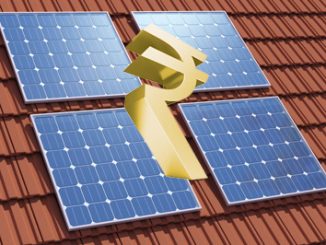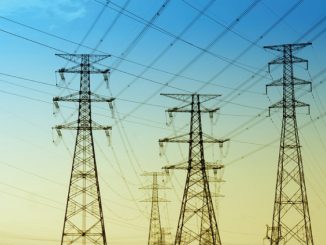 “We push for stringent quality checks”
“We push for stringent quality checks”
India’s energy transition has attracted a host of international organisations that have provided significant support, making the achievement of targets possible. With over Euro 3.5 billion currently invested in the country, KfW, the German state-owned development bank, is one of the earliest and largest supporters of India in its pursuit of clean and sustainable energy. Renewable Watch recently interviewed Sandra Soares da Silva, head, energy cell, KfW India, to understand the bank’s role in the changing renewable energy market in India, its focus areas, key challenges and future plans. Excerpts…
How does KfW view the Indian renewable energy sector in terms of an investment opportunity?
Renewable energy has been one of the main pillars of KfW’s exposure in India because of what it can contribute to it in terms of our learnings from the German energy transition. The sheer scale of the development in the Indian renewable energy sector is amazing. The Indian solar industry represented the third largest market last year, with almost three times the capacity installed in Germany. The growth rate of electricity demand is also expected to be high. Internationally, there is a lot of support, simply because India is the third largest carbon emitter and there is much more to come with coal and fossil fuel playing a big role in the country’s power sector. As a development financing institution implementing projects on behalf of the German government, renewable energy, emission reduction and climate change mitigation are our primary focus areas. Meanwhile, the push provided by the government, which has set high targets and is doing everything to achieve them, lends great confidence to investors.
What are some of the challenges facing the Indian renewable energy market?
There are several challenges, such as those relating to grid integration and land availability, which have slightly slowed down the growth in installed capacity. The transmission and distribution infrastructure that provides power to the end consumer is also facing issues, which we are somewhat concerned about. Further, the focus on
achieving low prices, although it is one of the major factors driving growth, may result in compromising project quality, which may lead to non-performing assets. Thankfully, this has not happened so far. Therefore, for our projects, we try to push for more stringent quality checks. Another area of concern is the environment and the social risk associated with land and water use in India. So, it is important to adjust the project execution standards to ensure the sustainability of the project. Moreover, with the increase in energy demand and power supply moving from grid-connected plants to distributed generation, the entire grid network and its management may change. It is imperative to plan the path of grid development in order to avoid the cost of transition in the future.
What is KfW’s exposure in India in terms of capacity and finance? How is KfW positioned in the Indian market?
KfW has about Euro 3.5 billion of ongoing projects in the Indian energy sector, of which about Euro 1.2 billion is for renewable energy projects, invested either directly with public sector entities or indirectly as lines of credit with public sector banks such as the State Bank of India. Another Euro 1 billion is for supporting the green energy corridors. In terms of installed capacity, KfW has financed 1.8 GW, of which 800 MW comprises solar energy, 700 MW wind and the rest biomass and small-hydropower projects.
What is your view on the recent policy change to include hydropower in renewable energy?
Hydropower has an important role to play in grid balancing in India. As a development bank, it is our job to also support difficult technologies. Even with the policy change, hydropower may still be a difficult sector, but we will continue to support its growth in India. In fact, at present, we are in discussions with potential partners for different projects including pumped storage, as we feel this technology has huge potential, despite the challenges.
What are the German best practices that can be applied to the Indian renewable energy sector?
In general, India is different from Germany, so each country has to find its own path to develop the sector. One of the learnings would be to understand that price is not the only factor that should influence the decision to install a plant; long-term viability should be the primary concern. Further, generation monitoring and data availability are extremely important for grid managers. Next is putting in place proper standards to levy the cost of carbon emissions. The transition to a low-carbon economy comes at a cost, which has to be borne by someone. In Germany, there is a public consensus on achieving energy transition, even if it comes at a cost. It is for the Indian government and all stakeholders to determine the best route to distribute the costs associated with the country’s energy transition. Moreover, I think there is a lot of international finance available for the Indian market. Products such as green bonds are becoming popular as long-term sources of funding. We feel that funding of Indian renewable energy companies or projects is not the primary issue; it is the pressure exerted by low prices. So, if low-cost finance is not available for projects, quality suffers on account of expectations to achieve a certain tariff and to improve project returns. I think if there is a general understanding in the market, realistic tariffs with a slightly higher cost of quality can be calculated. It is clear in Europe, including in Germany, that having a flexible grid is the most important thing for continuous growth of renewable energy.
Given the changing financial environment, how do you see KfW’s role evolving in the Indian renewable energy project financing segment?
There has been a major shift in the funding of renewable energy projects in India, from public sector investments in the initial years to largely private sector funding now. As a development bank, in the short to medium term, we will continue to support the traditional technologies of ground-mounted solar and onshore wind. But with the private sector expected to take over that market completely, we will have to move to funding innovative technologies. And this has already begun as we look towards funding floating solar or distributed renewable energy projects.
What are your future plans for India’s renewable energy sector?
There are several ongoing renewable energy and grid strengthening projects being funded by KfW in India. We have opened credit lines with the Rural Electrification Corporation, under which we have received a proposal for a 70 MW solar power plant that is currently under consideration. Meanwhile, in the short term, we will continue to support the traditional or standard renewable energy technologies and focus on aspects such as quality and sustainability. In the long term, our focus will move towards developing innovative technologies. Further, grid management is an ongoing focus area for KfW in India. We are also in discussions with distribution companies to help them reduce their losses through network strengthening. We are also interested in exploring the possible expansion and regional integration of the grid, which could enable better power sharing among India, Nepal, Bhutan and Bangladesh. Lastly, energy efficiency will be a primary focal point for KfW in India. It is important to save energy to reduce emissions and avoid global climate change, which will result in high costs in future.



